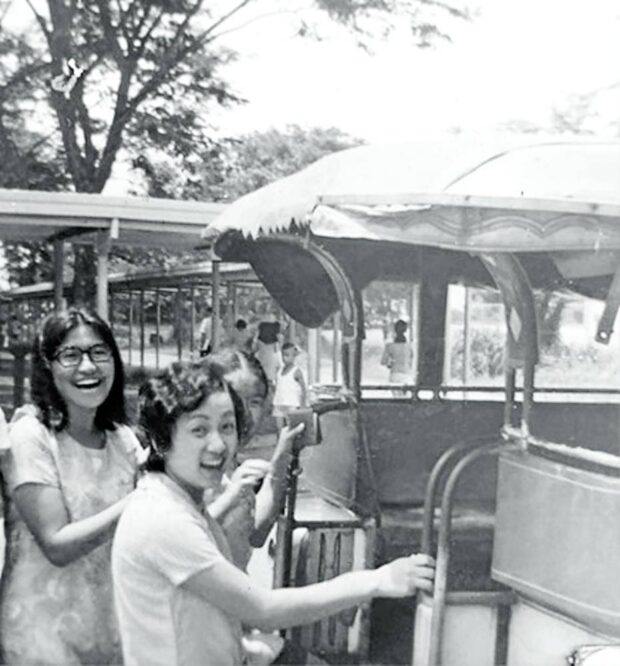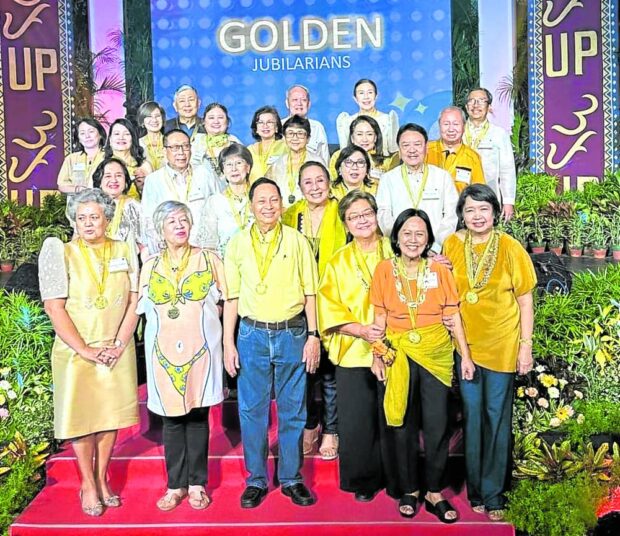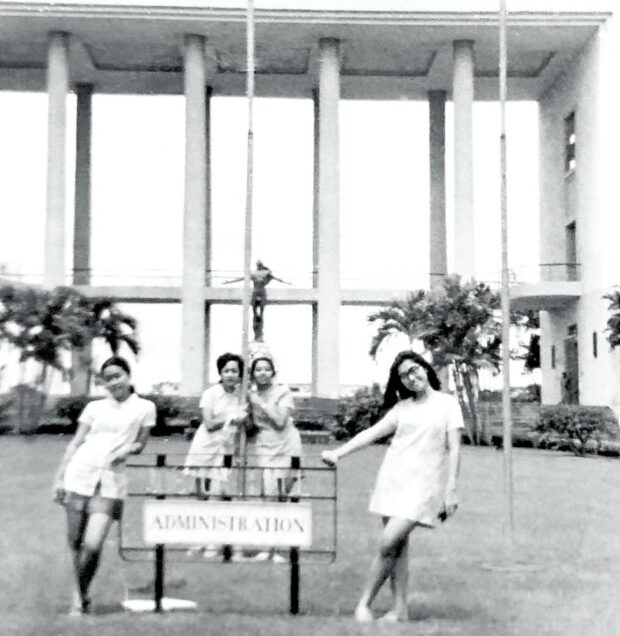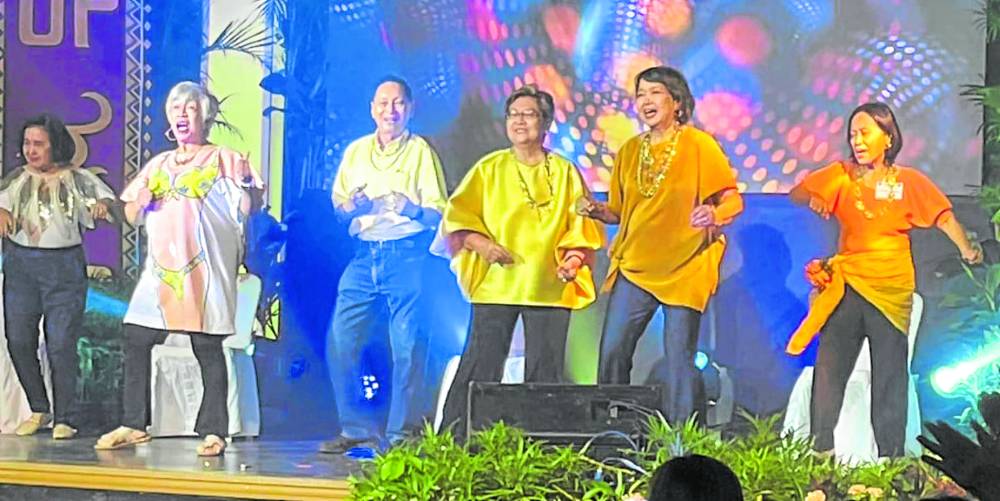The most turbulent period of the University of the Philippines’ (UP) history was recorded during our era in the 1970s. The First Quarter Storm happened. The suspension of habeas corpus was declared and the announcement of martial law caught us all by surprise.
Yet the indomitable spirit of UP survived all these.
Yes, we attended teach-ins and discussion groups (DGs), held vigils, joined rallies and marches. The UP community stood their ground against the police and military takeover of the campus.
Many survived teargas attacks. There were those who learned to manufacture molotov cocktails in the basement of Kamia Residence Hall. And there were those who initiated boycotts and strikes.
While my friends and schoolmates went to all these mass actions, coming home trembling and hungry, I was restricted from participating because my father was with the military then.
Stories abound of friends and comrades who went home barefoot, out of breath from running away from the antiriot patrols. Among my fellow UP students, there were those who landed in jail and got beaten up by the police during demonstration dispersals.
The more patriotic and brave ones went underground. Sadly, many never came back. They were either missing in action, perished during bloody encounters or were “salvaged” beyond recognition.
We grieve for these young heroes and heroines to this day. We remember them. We honor them. We will never forget them.
‘Peyups’ way
Meanwhile, within the Diliman Republic, we followed our parents’ wishes and their sacrifice, so that we may pursue higher education, obtain our university degrees and serve a bigger purpose for the benefit of our country. Of course, apart from studying hard, we also lived our university years on campus and had fun in our free time.
Against the backdrop of martial law and curfews, campus life eventually had some semblance of normalcy. The campus administration and the various student organizations laid out activities beyond lessons that were taught in classrooms.

All these were designed for us to grow the ‘Peyups’ way. The UP Delta Lambda Sigma sisterhood, the political committee of the UP Residence Halls Association and UP Christian Youth Movement were some of the organizations in the university where I lived. These organizations nurtured me and contributed to my growing up as a young idealistic AB Broadcast Communication student.
We lived through our university years, developing a taste for a broad range of experiences among the dizzying choices of what the university offered us.
Where we lacked certain skills, specialty clubs were set up to help, with math problems and the like. One may end up not only mastering the subject but gaining a college sweetheart, as well!
For a taste of the finer things in life, we trooped to free concerts, movies and performances at the Abelardo Hall, UP Theater, College of Arts and Sciences Theater, or the Dulaang Kapiterya of the UP Institute of Mass Communication—with our significant others or friends and classmates.
Campus romances blossomed and thrived—and lasted/settled in domestic bliss through all these years. The ill-fated ones, while many have ended up at the altar, are now just bittersweet memories of one’s youth’s folly.
Academic freedom
The UP professors encouraged us to be voracious readers, to be deep thinkers, to keep our ears close to the ground, and to identify the community or organization we chose to serve.
All our mentors inculcated in us the love of country and national pride. It has been in our DNA to appreciate what it means and what it takes to be proudly Filipino.

Free thinkers. Philosophers. Debaters. Activists. Leftists. Conservatives. Regionalists. Social Democrats. Greek-lettered society loyalists. Sophists. Fence-sitters. Free loaders.
Regardless of what badge we carried, academic freedom allowed us to sit in the classroom for traditional learning, or knock down those walls to learn from the masses.
We learned to be streetsmart. We learned to adapt in volatile, complex and sometimes ambiguous situations.
Through perseverance, many, if not all, allowed us to graduate and be the change agents, enablers and capability-builders of our country.
Born in the generation of baby boomers, flower people, and “make love not war” champions, we were in UP in the most interesting of times.
Natural-born leaders
Yet, many of us never really “left” the university despite holding prestigious and/or servant leadership roles in different sectors and industries.
Whether in the political arena, in government, in business and industry, in the academe, in arts/heritage/socio-cultural development, in NGOs, in mass media, we served as natural born leaders. Now as golden jubilarians, we continue to serve to this day.

The experiences we had in the 1970s had us gravitating back to the UP Diliman campus, not just through the years, but through five decades.
We have witnessed how the university has evolved, how activism has ebbed and flowed through the youngblood of the many Iskolar ng Bayan, and how the graduates feed our country’s and international workforce with a diverse group of talents.
We can at least speak of what to expect in the future as we have half a century of learnings to pass on. Many of us will continue to have a strong desire to serve, regardless of how far we go, how far our ambitions take us.
Welcomed by the bright yellow sunflowers along University Avenue on the approach to the Oblation, in front of Quezon Hall (Administration Building), we anticipate coming home.

Count on us to be there in alumni gatherings and reunions to pay tribute to UP Naming Mahal, just like we did last Sunday, Aug. 20, where together with my batchmates, we joined the revelry for the diamond, golden, ruby and silver jubilarians.
As a proud golden jubilarian this year, I look forward to celebrating as a diamond jubilarian in 10 years’ time. And yes, together with my batchmates, we plan to present another performance that will surely bring the house down again!
The author, a member of UP Diliman AB Broadcast Communication Class of ‘73, is a retired publicist.









































